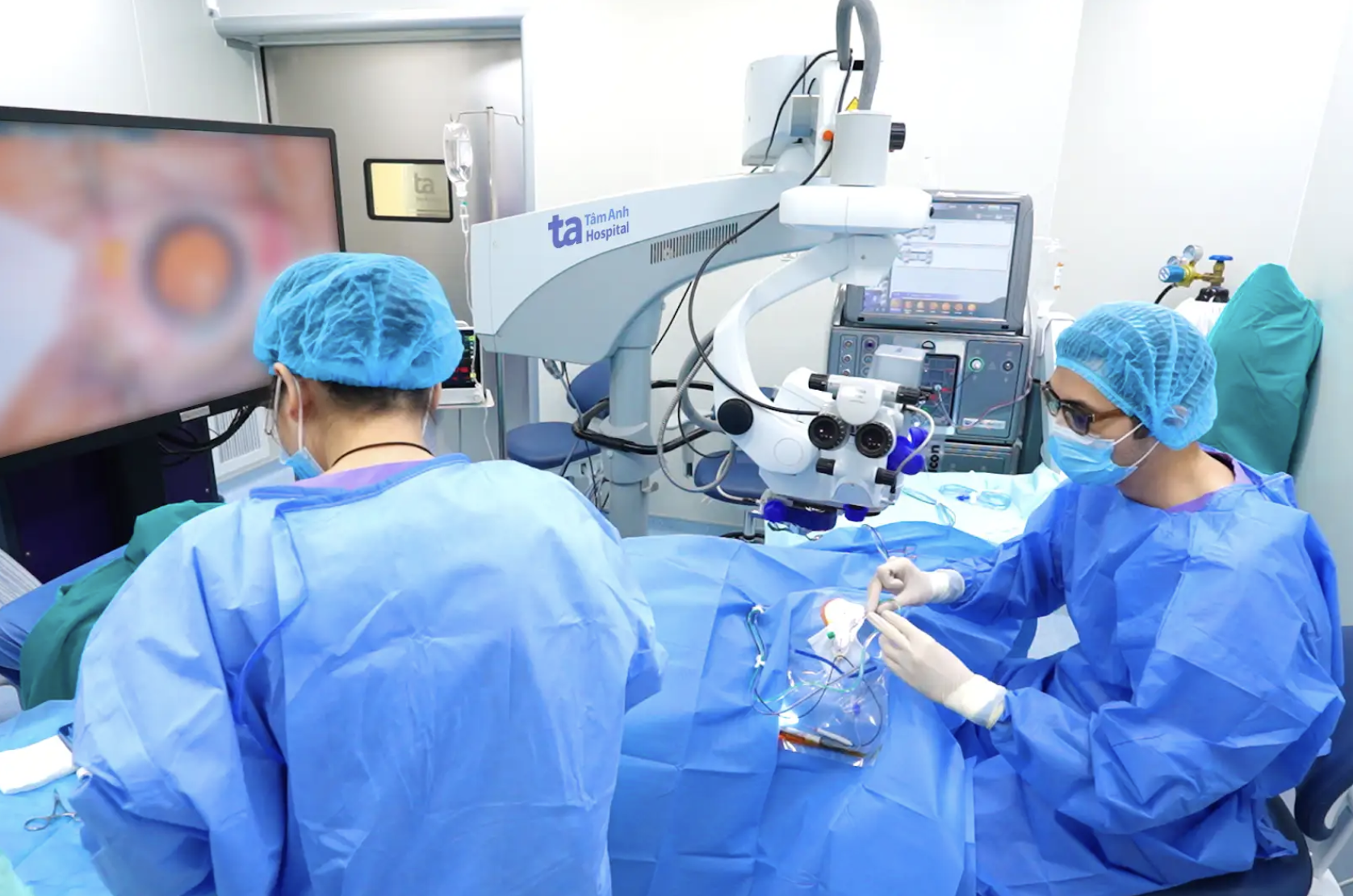Dr. Bui Viet Hung, Head of the Vitreoretinal Department at the High-Tech Eye Center, Tam Anh General Hospital, reported that Tinh arrived at the hospital unable to perceive light in her left eye. Doctors diagnosed her with a partially detached retina caused by a dislocated lens, accompanied by vitreous hemorrhage, requiring immediate treatment. Dr. Hung assessed the case as complex, noting the difficulty of observation during surgery, which increased the risks of endophthalmitis, bleeding, and further retinal damage.
The treatment involved two stages: retinal reattachment followed by artificial lens implantation to improve vision. In the first surgery, the team performed a vitrectomy, removed blood clots and the dislocated lens, and injected silicone oil to stabilize the detached retina. Post-surgery, the patient regained the ability to distinguish light and dark.
 |
Dr. Hung performs retinal reattachment surgery. Photo: Tam Anh Hospital |
Dr. Hung performs retinal reattachment surgery. Photo: Tam Anh Hospital
6 months later, doctors performed the second surgery to implant an artificial lens. Tinh's left eye, having undergone multiple procedures, presented a sensitive intraocular environment with a high risk of adhesion. Her right eye, which had a dense, long-standing cataract, underwent phacoemulsification (cataract surgery) the following day to restore vision in both eyes.
Cataracts, common among older adults, cause gradual vision loss and are a leading cause of blindness in Vietnam. This condition is a natural part of aging, and currently, the only treatment is phacoemulsification surgery. While considered safe and effective, the procedure is not entirely without risk, according to Dr. Hung.
Dr. Hung explained that many older adults are hesitant to undergo surgery, often delaying it or seeking eye drops in hopes of slowing or curing cataracts. However, long-standing cataracts harden the lens core while thinning the outer layer, increasing the risk of rupture during surgery. This can lead to lens dislocation, inflammation, retinal detachment, and potentially permanent blindness.
Patients diagnosed with cataracts should be monitored and consider surgery as advised by their doctor, without delay. Choosing a medical facility with modern equipment is also crucial. Post-surgery, vision typically recovers quickly, within 1-2 hours. Patients should be aware that blurred vision is not always a normal post-operative response. If they experience swelling, pain, rapidly worsening blurriness, sudden vision loss, or floaters and flashes 24-48 hours after surgery, they should seek immediate medical attention. These could indicate complications such as lens dislocation, retinal detachment, macular edema, or endophthalmitis.
Khue Lam
* The patient's name has been changed.
| Readers can submit questions about ophthalmological diseases here for doctors to answer. |












